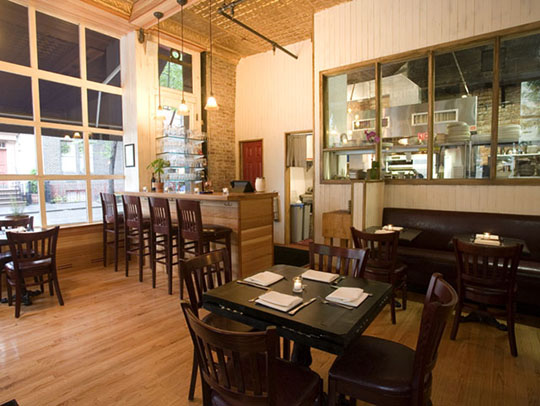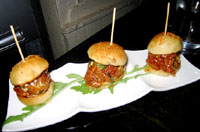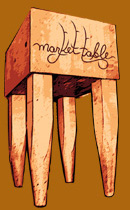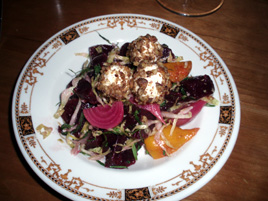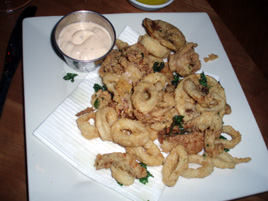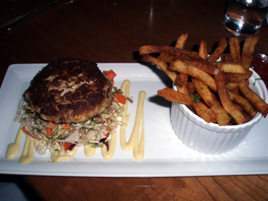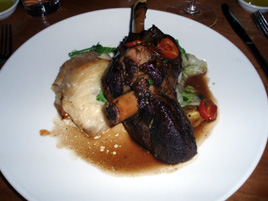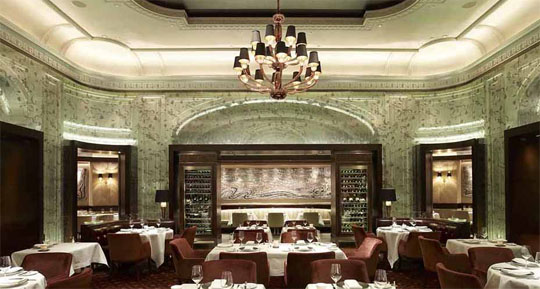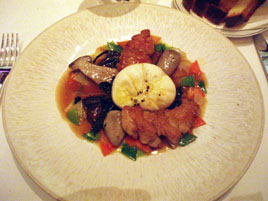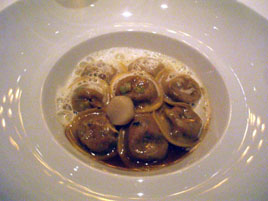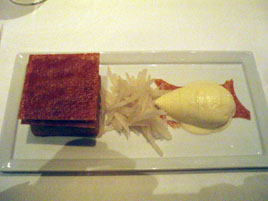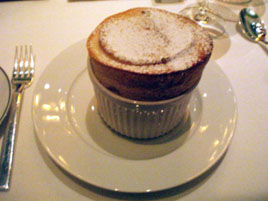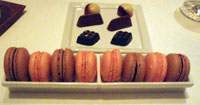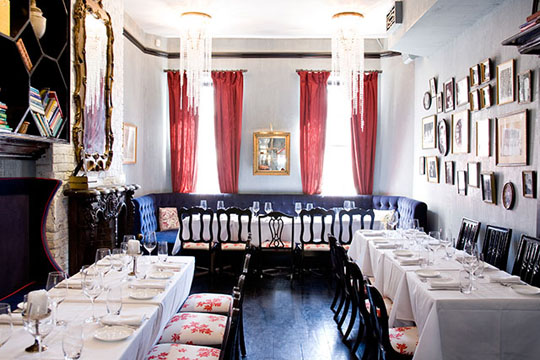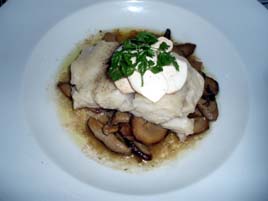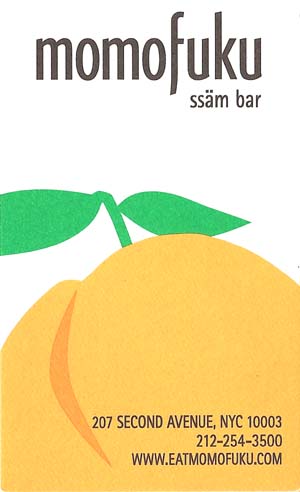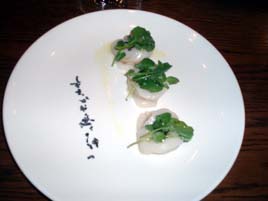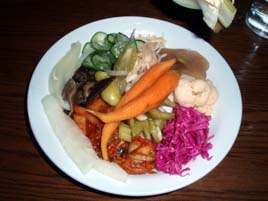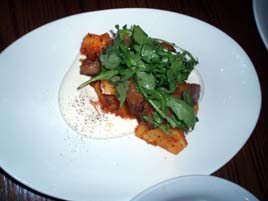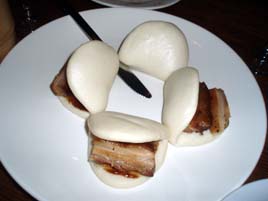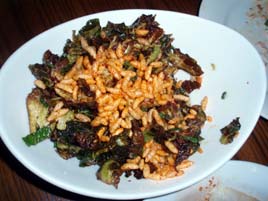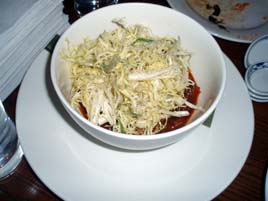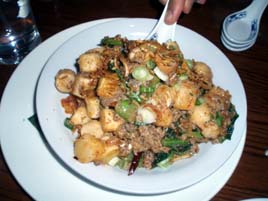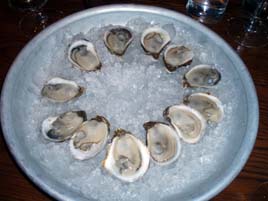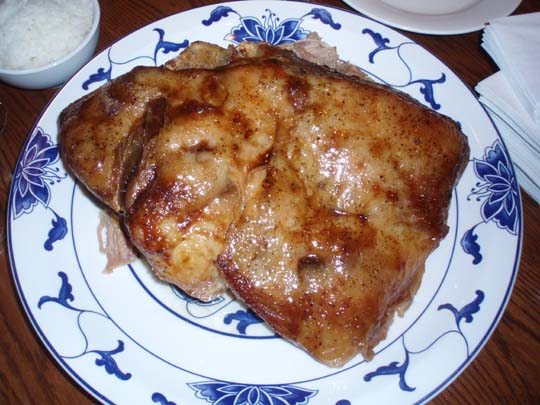davidburke & donatella
 Sunday, February 24, 2008 at 02:02PM
Sunday, February 24, 2008 at 02:02PM 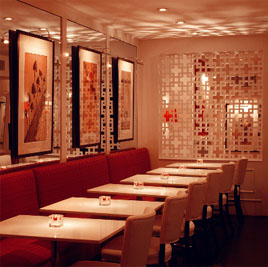
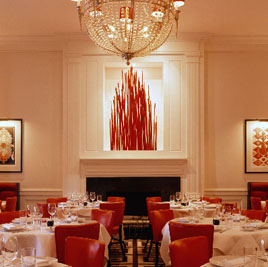
Note: In 2009, davidburke & donatella was renamed David Burke Townhouse, after Donatella Arpaia severed her ties with the restaurant. The restaurant closed in 2014, for what was supposed to be a month of renovations. Not long after that, Burke “took a backseat” in the operation of his various restaurants. David Burke Townhouse never re-opened, and as of May 2015 the building was for sale.
*
Davidburke & donatella is a frustrating restaurant that is hard to ignore. The first time I visited, I rated it a shade below three stars. The second time, I was so disgusted that I wasn’t sure I’d ever return. But David Burke’s witty menu, now under chef de cuisine Eric Hara, drew me back.
Some of the restaurant’s drawbacks are destined never to be remedied. Tables are squished so tightly together that you’re practically in your neighbors’ lap. This is certainly not the place for a romantic tête-à-tête. To get to the restroom and back, you must navigate an obstacle course. Given the price range, you’d like the service staff to be more attentive; given the cramped quarters, I’m not sure how they’d squeeze in any more of them.

The comely Ms. Arpaia and her Vespa
The wine list remains exorbitant. A mediocre pinot noir was $75, and I saw nothing for much less.
Both David Burke and Donatella Arpaia have since drifted on to other adventures. Arpaia’s latest is Mia Dona, with chef Michael Psilakis. Burke has opened six restaurants in the last four years, of which David Burke Las Vegas is the most recent.
But despite the distractions, the menu at davidburke & donatella has not remained stagnant. There were several items I had not seen before, and Burke’s abundant wit remains evident in all of them. I don’t know if he is still contributing, or if in Eric Hara he has found a worthy deputy.
When you sit down, the evening’s tasting menu ($75, five courses) is already in front of you. There are also several hand-written specials. It is admirable to have them in writing, especially given the dense complexity of Burke’s (or Hara’s) creations. If they were recited, I suspect they would be inaudible through the din.
A three-course prix-fixe (which wasn’t available before) is $55, although numerous dishes carry supplements. On the à la carte menu, appetizers are $15–24, mains are $28–44.
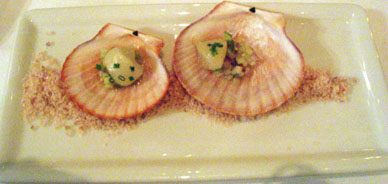
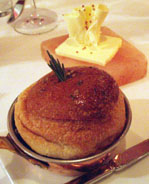
Scallop Ceviche (left); Bread service (right)
The amuse-bouche was a rather bland scallop ceviche. As before, the wonderful hot bread rolls are served in a copper pot, and the butter is an artful sculpture that one is almost sorry to cut into.
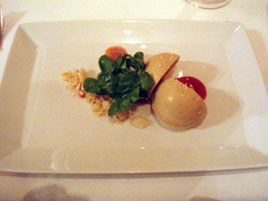
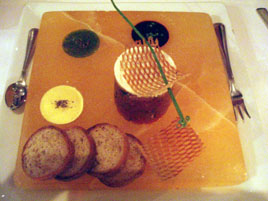
PB&J (left); Parfait of Salmon and Tuna Tartars with Crème Fraiche (right)
“PB&J” ($21) seems to have undergone some refinement since it was featured in New York. Earlier photos (example here) showed a hunk of pan-seared foie gras between two slices of toasted brioche, with strawberry jam and a macadamia nut spread. But the version of served yesterday was a lot less interesting. The foie gras itself was more like a tennis-ball-shaped terrine cut in half, with the jam and peanuts on the side. Though visually arresting, it was not as interesting with the contrasting ingredients demoted to observer status.
My girlfriend adored the parfait of salmon and tuna tartars ($16). The version served last night was handwritten on the menu, so it might not be exactly the same recipe shown on the restaurant website, although I believe it is close.
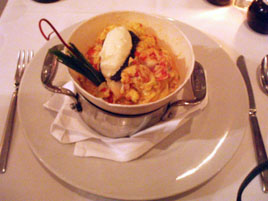

Organic “Ostrich” Scramble (left); Handmade Cavatelli & Braised Short Ribs (right)
For the main course, I decided on one of the handwritten specials, described as an “Organic ‘Ostrich’ Scramble” ($44 as an entrée; also available as an appetizer). The ‘Ostrich’ in quotes refers to the serving vessel: half an ostrich egg. There is otherwise no ostrich in the dish, which includes scrambled organic eggs, lobster, tomato, caviar and crème fraiche.
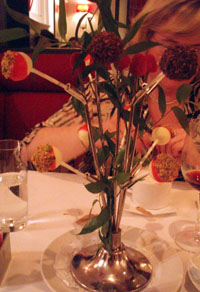 I give Hara (or was it Burke?) full credit for dreaming up something that, I think we may safely say, no one anywhere else is serving. But in the end it was just a tasty mash-up of luxury ingredients that didn’t really sustain enough interest to be a main course.
I give Hara (or was it Burke?) full credit for dreaming up something that, I think we may safely say, no one anywhere else is serving. But in the end it was just a tasty mash-up of luxury ingredients that didn’t really sustain enough interest to be a main course.
My girlfriend was quite happy with the Homemade Cavatelli & Braised Short Ribs ($32).
We concluded with a shared order of Burke’s Cheesecake Lollipop Tree ($18; left). I’ve now had it three times, and like many Burke creations, I think it’s more notable for how it looks than how it tastes.
More than four years after it opened, davidburke & donatella has lost none of its popularity. It seems to be nearly always full, drawing heavily on a well dressed Upper East side crowd.
It would be easy for such a place to lapse into dull repetition, but Burke and Hara continue to swing for the fences with their inventive cuisine. If not every item is a hit, one has to respect the creativity. But in so many other ways the restaurant is incredibly unpleasant. After three uneven visits, I am not sure I’ll be back again anytime soon.
davidburke & donatella (133 E. 61st Street between Park & Lexington Avenues, Upper East Side)
Food: ★★
Service: ★
Ambiance: ★½
Overall: ★½


